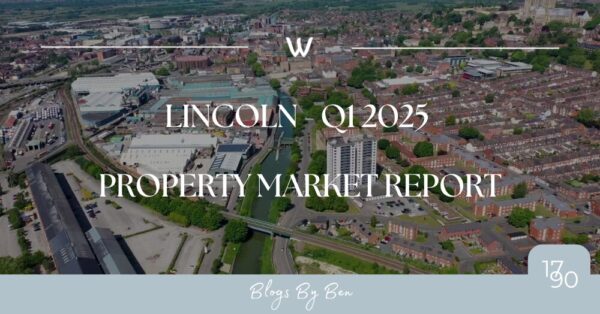While the statistic of an average home in Lincolnshire costing 7.47 times the annual salary might initially appear discouraging, it’s crucial to examine this figure through various lenses to gain a comprehensive understanding of affordability. Let’s delve deeper into the factors influencing homeownership in the region.
The Historical Rollercoaster of Interest Rates:
Interest rates have historically been a significant determinant of housing affordability. Looking back, the UK experienced exceptionally high interest rates in the early 1980s, reaching over 15%. This meant that a significantly larger portion of homeowner’s income went towards mortgage repayments, leaving less disposable income for other expenses. Imagine the impact this had on household budgets and the overall economy! Fortunately, we’ve seen a steady decline over the decades, with rates currently hovering at comparatively low levels. This downward trend plays a vital role in mitigating the affordability challenges posed by rising house prices. This historical context highlights the importance of considering interest rates when assessing affordability.
Beyond the Average: Micro-Markets and Property Types:
It’s important to remember that the figure of 7.47 times annual salary represents an average across Lincolnshire. Affordability can vary significantly depending on the specific location and type of property. For instance, rural areas or smaller towns like Grantham, Stamford, or Boston may offer more affordable options compared to the bustling city of Lincoln with its historic attractions and vibrant cultural scene. Similarly, smaller properties like flats or terraced houses tend to be more accessible than larger detached homes with gardens and extra amenities. This nuance adds another layer to the affordability picture, encouraging potential buyers to explore diverse areas and property types to find the best fit for their budget and lifestyle.
The Power of Perspective: Balancing Price and Borrowing Costs:
Despite the undeniable challenges, it’s essential to maintain perspective. While house prices have undoubtedly increased, the cost of borrowing has generally decreased, counterbalancing the impact to some extent. In fact, today’s mortgage payments as a percentage of take-home pay are only slightly above the long-term average. This suggests that while homeownership requires a substantial financial commitment, it remains within reach for many. It’s easy to get caught up in headlines about rising house prices, but understanding the bigger picture, including the impact of lower interest rates, can provide a more balanced perspective.
Factors Contributing to Attainable Homeownership:
Several factors contribute to making homeownership a realistic goal for many in Lincolnshire:
- Low-Interest Rate Environment: Compared to the historical highs, current interest rates make mortgages more manageable. This means a larger proportion of your monthly payment goes towards paying down the principal amount of the loan, rather than just covering interest charges.
- Flexible Mortgage Terms: The availability of longer mortgage terms, spanning 30 or even 35 years, can significantly reduce monthly payments, making homeownership more accessible. While extending the mortgage term increases the total interest paid over the life of the loan, it can make those crucial early years of homeownership more affordable.
- Government Support: Various government schemes, such as Help to Buy and shared ownership, provide valuable assistance to first-time buyers, enabling them to overcome the initial hurdles of entering the property market. These schemes can offer equity loans, reduce deposit requirements, or allow buyers to gradually increase their ownership stake over time.
- Dual-Income Households: The prevalence of dual-income households has increased the combined affordability capacity, making homeownership more feasible for couples and families. This allows for larger deposits, higher borrowing capacity, and greater resilience to economic fluctuations.
- Regional Variations: While averages provide a general overview, exploring different areas within Lincolnshire can reveal more affordable pockets, particularly in towns or villages further from major urban centres. Researching local market trends, amenities, and transport links can help identify hidden gems with both affordability and quality of life.
Beyond the Numbers: The Value of Homeownership:
While financial considerations are paramount, the desire for homeownership often extends beyond mere numbers. Owning a home provides stability, a sense of community, and the freedom to personalize one’s living space. It offers a sense of security and belonging, allowing individuals and families to put down roots and become part of a neighbourhood. The ability to renovate, decorate, and adapt your living space to your own tastes and needs is another significant advantage. These intangible benefits contribute significantly to the enduring appeal of homeownership.
The Importance of Financial Planning and Prudent Budgeting:
Achieving homeownership in Lincolnshire, or anywhere else, requires careful financial planning and prudent budgeting. Saving for a deposit, managing debt responsibly, and tracking expenses are crucial steps in preparing for the financial commitment of a mortgage. Seeking professional advice from mortgage brokers or financial advisors can also provide valuable insights and guidance. By taking a proactive and informed approach, aspiring homeowners can increase their chances of success and navigate the market with confidence.
In conclusion, while the affordability of homes in Lincolnshire presents challenges, it’s crucial to avoid generalizations and consider the broader context. By understanding the interplay of historical trends, regional variations, and individual circumstances, aspiring homeowners can make informed decisions and navigate the market effectively. With careful planning, prudent financial management, and a proactive approach, the dream of owning a home in Lincolnshire can become a reality for many.



